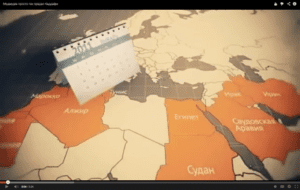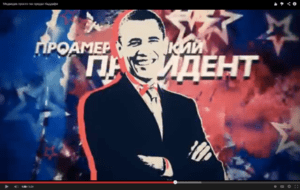When President Trump and Press Secretary Spicer started to insist that the protest against Muslim ban [that is not a ban] was paid for, it rang a bell. This kind of rhetoric is a textbook reaction from an autocratic ruler who cannot believe that people would care enough about human rights to go out on the streets on their own. Unfortunately for all the autocrats in the world, people would. The success of the protest is hard to predict, especially in a democratic country, but if people are protesting against you, the first thing to do is to try and delegitimize it. Here is how.
The wave of demonstrations against electoral fraud in 2011-2012 in Russia (so-called Bolotnaya Square protests or white ribbon movement) led Russian officials to declare that the protests were initiated and paid for by the Department of State, with former US ambassador to Russia Michael McFaul ‘giving instructions’ to Russian ‘aggressive liberals’, claiming that the US is on the quest to destabilize Russia and ‘bring it to its knees’. Among pro-governmental supporters, the ‘white-ribbon’ become a swearword for those who dared to criticize the government, with some people defining a white ribbon as ‘a symbol of capitulation and treason… that is forced upon [us] by foreign political strategists’. A typical example of this kind of rhetoric would be a pro-Kremlin youth group video that went viral in 2011: ‘Why Kaddafi must be killed’. In this video, the locations of Arab spring uprisings in the Middle East and North Africa were marked in orange (reminiscent of the orange revolution in Ukraine), while Obama wore a Kaddafi mask against a backdrop of the American flag, symbolizing a puppet-president [you are the puppet!] that sells the country’s riches to America. The video itself argued that the protests were paid for in dollars to destabilize the countries and Russia would be the next target of American provocations.
A popular Internet meme – the State Department’s cookies (‘pechen’ki GosDepa’) – appeared after a TV documentary ‘Anatomy of protest’ in 2012, that argued that the ‘white ribbon’ opposition leaders and participants of the protest in general were paid for by the State Department together with the Georgian government [sic]. This is a repetition of the narrative, that a genuine protest is impossible in Russia, unless it is sponsored by the US in an attempt to destabilize the country.
President Putin’s reaction to the electoral fraud protests was revealed during his annual teleconference ‘Direct Line with Vladimir Putin’ on Pervyi Kanal on 15 December 2011. He denied the connection between Russia’s white ribbon movement and the Orange Revolution in Ukraine and thought that the demonstration was ‘for a healthy way of life’ [i.e., people were carrying condoms]. However, later during the direct line he remarked that he was sure that some of the people went to the protest ‘in a foreign country’s interest and for a foreign country’s money’. The notorious usage of the singular as opposed to the plural was telling – the country in question was not named, but it was clear for the audience that he was talking about the only country that could afford financing a protest in Russia, the USA.
Pervyi Kanal, first among Russia’s country-wide channels, responded to the direct line with lightning speed and three days later on Sunday prime time news there was a segment on ‘the history and spread of colored revolutions’, where it was stated that there is a special American think tank that is active in countries where the US ‘is interested in changing the regime’. One of the Pervyi Kanal’s experts emphasized that ‘there are many symbols and concepts, but the aim and the sponsor is the same – the USA’. Moreover, Putin denied the fact that Russia has political prisoners and compared the electoral fraud protest with the 1917 revolution, emphasizing that Russia did not need those kinds of upheavals again. This discourse once again underlined the existential nature of the threat of protesters: according to Putin they were trying to shake the state and send it into the turmoil of revolution. Thus, the Soviet frame about American dollars buying instability and wars was time and again re-articulated both by state officials and TV personalities, building on the collective memory of ‘foreign agents’ and ‘saboteurs’.
This narrative, bolstered by mostly state-controlled media and armies of Internet trolls was largely successful. The protests died out and the Russian government managed to secure its base through actually rigged elections and a new focus on ‘sovereign morality‘ and ‘traditional values’. So, if President Trump and his Administration want the Americans to believe that the protesters were paid for, they should really work on the embeddedness of their narrative and proper enemy images. But so far they are just looking crazy.
Elizaveta Gaufman is Assistant Professor of Russian Discourse and Politics at the University of Groningen, the Netherlands. She is the author of "Everyday Foreign Policy: Performing and Consuming the Russian Nation after Crimea" (2023) and "The Trump Carnival: Populism, Transgression and the Far Right" (2024).




Another explanation is the use of paid actors by the Trump campaign ( & later the administration). The most recent example I heard of was the first rows at Trump’s CIA meeting. The Trump administration, since they did so themselves, would naturally assume that everyone else was doing the same thing.